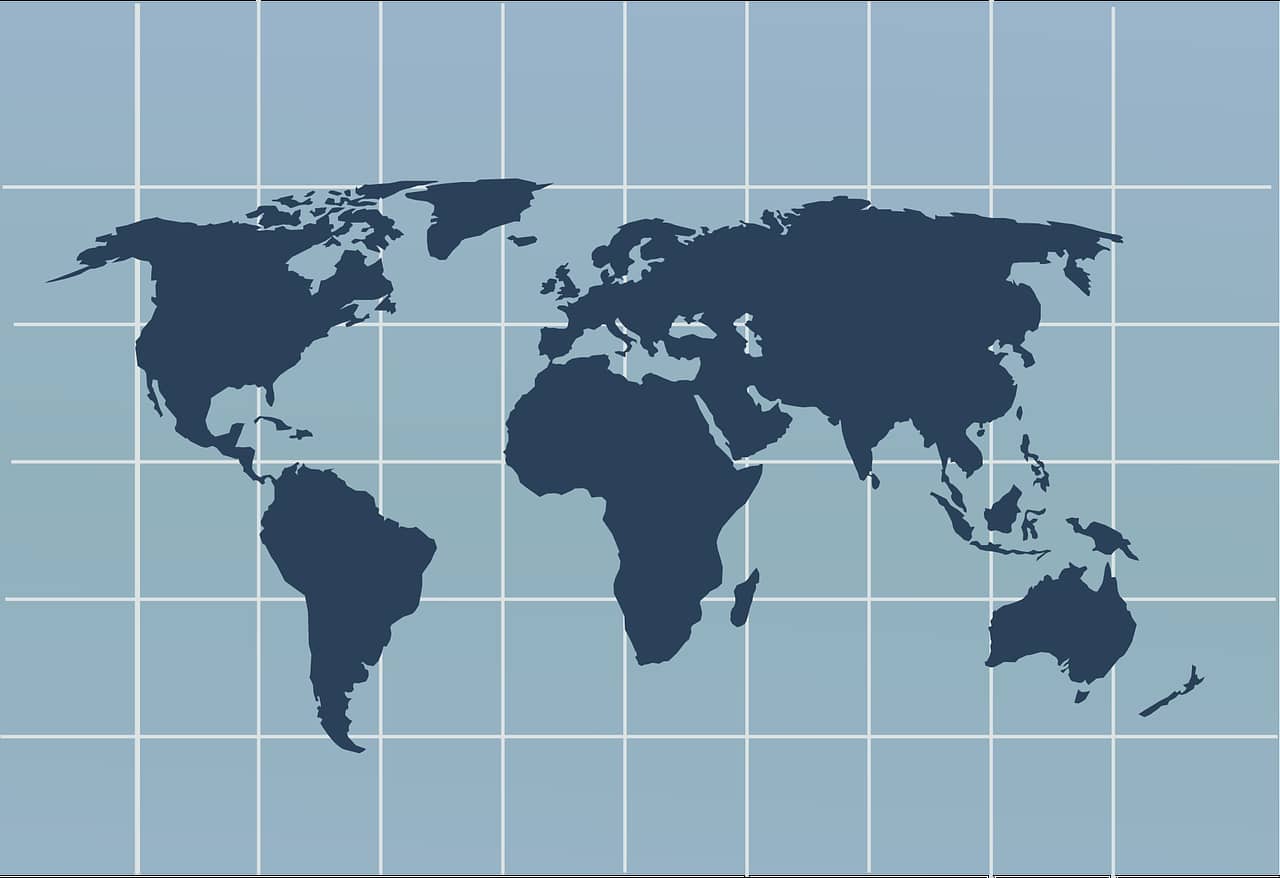This post aims to summarize the key statements and results, as well as the proposals put forth in the World Economic Forum’s report Unlocking Technology for the Global Goals. The report zooms in on inclusivity, sustainability, and human-centered development against the backdrop of the Fourth Industrial Revolution. Anyone who is not indifferent to how technology shapes and benefits the world around will this summary to be a useful overview and introduction to the full-length report.
The research released by the WEF and PwC outlines the current state of play of global technologic innovation and its relationship with Sustainable Development Goals.
The 48-page ebook zooms in on the global impact of core technologies behind AI, Blockchain, IoT, Big data, Robotics, AR/VR, Advanced materials, 3D printing, Drone technology, 5G, and Synthetic biology across 300 applications. The seventeen UN Sustainable Development Goals, also referred to as Global Goals, and their target for 2030 are correlated with the impact of the previously listed technologies.
The challenge and opportunity of the new decade
The report paints a portrait of the current global circumstances at the turn of the decade. It cites that, while major factors that contribute to a positive result on the Human Development Index (HDI), such as investments into health and education, planetary scale issues (climate change, biodiversity loss and ocean health) have been under-addressed. Neither has technological innovation turned its benevolent gaze towards initiatives that seek to relieve the global ecological crises. Both the public and private sector are failing to uphold net zero emissions initiatives. Despite positive developments in civil societies, only 1% of low HDI countries have access to a broadband internet connection, a defining factor for furthering the Fourth Industrial Revolution.
While many companies have invested in facilitating digital transformation across enterprise, the business environment remains unprepared and unequipped to handle what the future might bring. Always have to adapt their business and operational models. Companies have a higher percent of failure more than ever before.
Technology is shown to have secured massive adoption with statistics on the current net worth of several companies (social networks) Humans are reported to have interacted with chatbots more so than actual humans, while consumer electronics and mobile adoption have become a staple in most economies. Modern emergency relief efforts are also showing signs of further relying on technology to provide immediate reaction.
Social acceptance in natively non-digital industries is a must. Public perception still plays a big role in the adoption of new technologies for many industries. Some countries are more digitally prepared to handle change and as a result have more opportunities when it comes to food and agriculture, health and wellbeing, energy and materials.
Yet there is still disparity between the two hemispheres when it comes to the flow of finance, technology transfer, capacity building and trade.
The common thread, despite the border transcending and industrially disruptive effect of technology, sustainable development will take much more to achieve in under a decade. Investors, governments, business, academics are urged to take part in to benefit society on a local and global scale.
The state of play
The current state of things points out that goals aligned with Health, Clean Energy and Industry, Innovation and Infrastructure are those with the highest number of Fourth Industrial Revolution applications already in use. The hand-picked applications fall under the criteria of Feasibility proven (already creating impact today), Transformational impact (directly addresses challenge areas), Adoption potential (large potential population), Technology centrality (one of the highlighted technologies is applied), Realizable enabling environment (policy and governance supported).
Here the report samples 300 real-life applications of Industry 4.0 technology across Global Goals such as Good Health and Well-being (Goal 3), Quality Education (Goal 4), Gender Equality (Goal 5), Industry, Innovation and Infrastructure, among others. Notably, the application of AI, blockchain and the Internet of Things (IoT), all 4IR-related technologies, are mostly feautered in the medium to high maturity range. These are also referred to as “in vivo” or currently operational.
What it also refers to as “in vitro” applications, or Moonshots, are R&D stage applications, that address a sustainability problem, have high potential for adoption, where contemporary technology plays a role. These include breakthroughs in quantum enabled computing, zero emission transport, quantum cryptography and increased cybersecurity, connected and interoperable AI-enabled monitoring platform, zero emission chemicals and materials, gene editing in preventive medicine and advanced waste disposal.
Identified as the key transformative changes to tackle Global Goals are:
- Productivity of systems – decision making without human input and intervention (AI-enabled); optimization and operational efficiency; precision monitoring of processes; robotic process automation of routine tasks.
- Transparency, traceability and accountability – tracking and monitoring of complex industries and their intrinsic processes (supply chains); corporate disclosure and reporting; availability of data, transparency of systems (blockchain).
- Decentralization and access – combination of IoT, AI and blockchain-enabled tech for active management of resources and assets, especially in a sharing economy.
- Creation of, and access to, new financing models – finance platforms, products and services could provide access to capital, insurance, investment opportunities, especially in crowdsourced environmental initiatives.
- Discovery, including new materials – new methods and ways of doing things; automation and acceleration of discovery; big data-driven experimental validation; application to new materials – applicable to medicine, advanced biofuels, and biotechnology breakthroughs.
Barriers and risks of scaling technology
Over the course of the analysis, Frontier 2030 that backed the research behind the report identified barriers and risk to meeting target results outlined by the Global Goals.
Barriers
- Data – there is a lack of a sustainable economic models that ensure ongoing flow of actionable data; low-income geographies lack capacity and regulatory supervision for appropriate data collection; differing standards of data impede integration across systems and platforms
- Technology – unevenly distributed technology maturity due to lack of incentives and research, underdeveloped or non-existent infrastructure, specifically cloud, internet and electricity access to support digital innovation and transformation; relevance – centralized concentration of innovators, investors and businesses.
- People – talent pools are to small to develop technology at scale, displacement of the manual workforce; silos across disciplinary fields – lack of collaboration between professionals in diff fields.
- Process – hard to predict technological impact; technology changes very fast, but regulatory frameworks and processes fail to stay relevant fast. Legal liability becomes more obscure in a decentralized environment. This also leads to conflicting demands towards people and organizations for compliance due to distributed assets; higher risk for investment to fail in the face of uncertainty in the results and benefits it can instead produce; lack of motivation towards publicly controlled markets.
The identified Risks of scaling:
- Performance design – Bias and Error – perpetuate racial and cultural discrimination and stereotypes; no system is perfect and is prone to error.
- Socioeconomic – Job Displacement, Concentration of Power
- Environmental – Greenhouse gas emissions, Biodiversity, Pollution
- Security and control – Privacy and data, Compromised security
Tech for Good
The report’s authors stress that the race for immediate profit-oriented gain needs to change. Collaborating with the Future Council on Fourth Industrial Revolution for Public Goods they propose a key set of enablers to foster long-term development of markets and opportunities enabled by technology.
Call to Action and Conclusion
The paper calls out innovation to be a collective effort and one that requires input from people in different roles and with different capacities to be conducive to positive change in society and the environment. It appeals to both government leaders and tech executives to take center stage to tap into the potential of technology to support the Global Goals. The aim at two target groups in no way restricts others in related, if somewhat different, roles to partake in using the reports proposed framework to commit to the call to action.
The in-depth blueprint proposed for both stakeholder groups can be found on page 37 of the Unclocking Technology for the Global Goals report. Technology proponents and drivers are also encouraged to see how innovation combinations can be applied to overcome some of the outlined barriers and risk to scaling.
Frontier 2030, will maximize chances to meet the 17 sustainable development goals with UpLink, a digital platform to aggregate ideas and proposals from younger generations and entrepreneurs. The platform works with the Forum’s Centre for the Fourth Industrial Revolution Network, a hub that facilitates the formation of policy networks to accelerate benefits for inclusive, sustainable and human-centre development.
At the juncture of the decade, one third of the time to meet Global Goals passes. Humanity looks back on its transition from steam power, then gas, oil and electricity, then electronics, telecommunications and computers and now onto the Internet. If ever there was a more pressing and pivotal time, it seems, it would be now, to truly make technology for good.
07 February 2020

 Pavel Kaplunou
,
Pavel Kaplunou
, 



